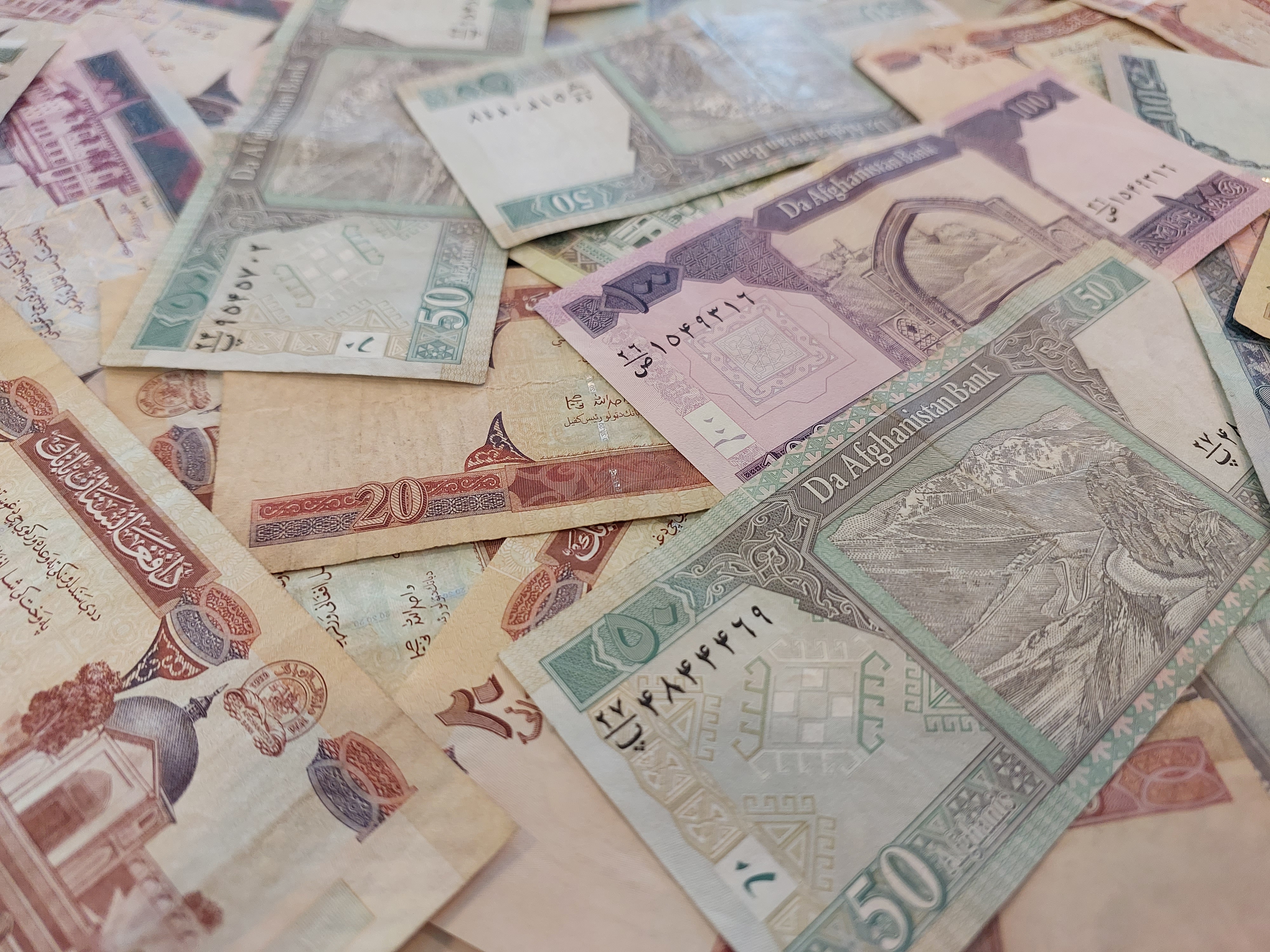The official currency of Afghanistan is the Afghan Afghani and is abbreviated as AFN.
So if you hear someone ask for 100 Afghanis, they're not asking for 100 Afghani people.
The name Afghani was first used in 1925, replacing the Afghan Rupee. The current issue was introduced in 2002 after the US invasion and replaced the two separate Afghanis that were then in circulation. One had been issued by the central government and one by the then warlord, General Dostum.
Notes in circulation
The current notes in circulation in Afghanistan are the 1, 2, 5, 10, 20, 50, 100, 500, and 1000 Afghani notes, although the lower denominations also have coins in circulation of the same value and are therefore much less common.
The 1000 note can be quite annoying. Despite only being worth roughly USD$11, many shops will not have change or be able to break a note of this size, so if you do get your hands on one and aren’t planning to keep it as a souvenir, make sure you change it when you can.
Coins in circulation
As the exchange rate is about 70 Afghanis to US$1, you are unlikely to come across coins very often, if at all. The current coins in circulation are 1, 2 and 5 Afghanis.
Exchanging money
The most common and reliable way to get your hands on some Afghan Afghanis is to go to an exchange shop. These are all over Kabul, as well as at Kabul airport. The smaller cities such as Mazar-e-sharif and Herat also have a large number of money changing options.
One particular facet of changing money in Afghanistan is that you’ll receive different rates for your foreign currency depending on the value of the note, and also the condition it’s in. A US$100 note will receive a better exchange rate than any other notes for example – the higher the note, the better the rate. So this isn’t a great place to use up your $1 and $5 notes if you have them. And obviously the better the condition, also the better the rate you’ll get, so likewise if you have any tatty notes, this isn’t a great place to try and get rid of them.
Most major currencies such as Euros, Pounds, Australian Dollars, Canadian Dollars, AED, and RMB are able to be exchanged, however USD is always the best bet as it will always be accepted.
Most accommodation will also be more than happy to help you exchange money.
Exchange Rate
The current exchange rate (2024) is 70 AFN to 1 USD. The currency has gradually depreciated, as most currencies do, and other than a brief period of extreme depreciation where it reached 105 in early 2022 which is to be expected, the currency has been really quite stable. It was around 70 at the beginning of 2018, 75-80 during 2020, by the end of 2022 it was around 88, and now it's back to 70. Oddly enough though, it’s actually one of the safer and more predictable currencies of the countries that we frequent.
Can you use foreign currencies in Afghanistan?
The short answer is no. Most restaurants, cafes, supermarkets or small shops will not want foreign currencies. When buying more expensive items such as carpets, many will be willing to accept USD or Euros, however most other currencies wouldn't be accepted. The same applies to hotels, who are also willing to accept foreign currencies.
Are there ATMs in Afghanistan?
Yes, there are ATMs, however do not expect to be able to use them. Very often the ATMs will not be working at all, and if you do find one that’s working, it’s likely that it doesn't have any money in it. And then if you do find one that’s working and also has money in it, your card probably won’t work in it anyway. And then if you do use your card, your bank will likely block it, and we don’t need to tell you how much of a pain that can be. Banks really don't like Afghanistan popping up on their customers’ accounts.
So although technically the answer to this question is yes, please expect to have all of your required money in cash.


